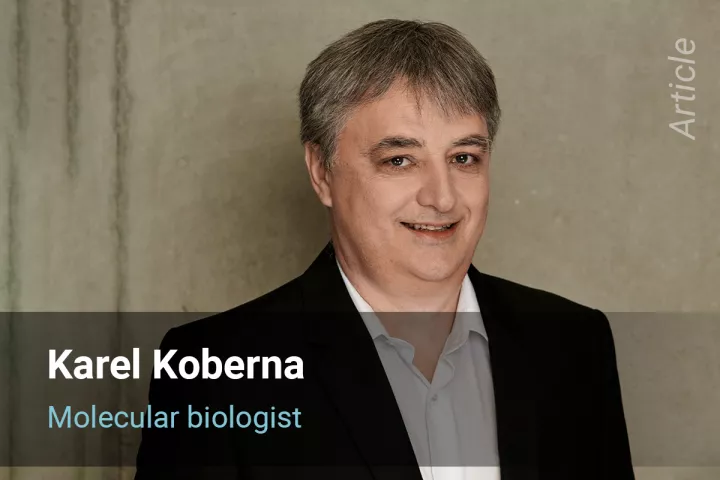For the molecular biologist Karel Koberna, the path to science was fairly straightforward. During his studies at the Faculty of Science of Charles University, he became fascinated by electron microscopy, which showed him a completely new and until then hardly imaginable view into the cellular microworld. Gradually, he became more focused on biomedical research and the development of new approaches that can accelerate and simplify various biomedical applications. Today, at CATRIN - IMTM, he focuses on cell biology and medicine.
“My current main scientific focus is investigation of the influence of cytidine metabolic pathways on cytarabine therapy of haematological cancers and development of new methods for their analysis. I am particularly interested in DNA replication, chromatin structure and transport of bioactive molecules. In addition, I am involved in the development of technologies applicable to biomedical research,” said the scientist, who has also worked in laboratories in Germany and Spain.
The amazement with modern technology in electron microscopy still persists. “If I were to talk about fascination in the context of science, I must mention the current tremendous burst of possibilities that were previously unthinkable. For example, the use of computer technology in biology allows analyses to be completed within minutes, whereas just a few years ago, it took days or weeks,” explains the man who has been involved in describing the replicon arrangement in mammalian cells using electron tomography and has contributed to the development of a new method for quickly, cheaply and easily testing the effect of various substances against, for example, cancer cells. He plans to continue his involvement in developing therapies that could help cancer patients. But rather than scientific dreams, he speaks of a desire to keep learning and discovering new things. “I would also like to make science more accessible and understandable to the general public, showing how fundamentally it affects our daily lives and how it opens up new possibilities,” he added.
Text: Martina Šaradínová, CATRIN

